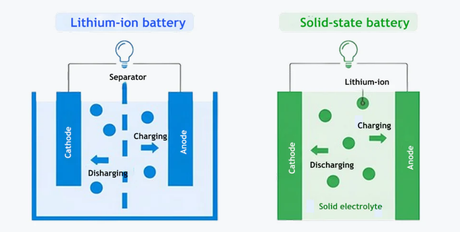Solar Energy For Kids: 101 Beginner Guide To Solar Energy
If you have kids, especially younger ones, you know how curious they can be.
And you also know how embarrassing it can be when they ask "why" a million times a day.
I mean, we've all been there.
You're in public. Your child asks you "why" something is the way it is, and you don't know what to say.
As I said, embarrassing!
But the reality is that children are naturally curious, and asking why is, in fact, a critical part of their development.
So, if you have recently installed solar panels on your property's roof or on your RV and want to be prepared for the inevitable "why did you install solar panels?" followed by "why is solar energy better'?' questions, fear not as we have all the answers you need!
Explore the benefits of solar energy here.
How Do You Explain Solar Energy To A Child?
Simplify The Subject
The key here is to use simple words and break down the topic into smaller pieces.
For instance, start with a simple definition of solar power. Then, explain how it works. The final stage would be to explain how and why it came about. That is just an example, but you get the gist!
Make It Interactive And Practical
Rather than teaching them all about solar energy in a sit-down teacher/student format, make the session fun and interactive. Encourage them to ask questions, introduce a little quiz at the end and give them a project so that they can put their learning into action.
This will make understanding and retaining information much easier!

Link The Subject To Something They Know
When explaining how solar power works and why it's better for the planet to your children, connect the topic with something they're already familiar with.
For instance, if they've read a book involving the sun or often watch a cartoon where the sun shines every now and then, use that and the other characters in the book or cartoon to make the connection.
This will make it easier for them to understand.
How Solar Energy Works Step-By-Step For Kids
Now that we've talked about the theory, let's practice how you can explain solar energy to your kids with the following step-by-step process:
What Is Solar Power?
The first step is to tackle the definition of solar power.

The sun is the primary source of energy for all living organisms. It radiates light and heat, supporting life on the planet.
Now, solar power is the power directly generated from the sun. Once captured and stored, it can be used to heat your bedroom or your water so you can have a warm bath. And it can also be converted into electricity to light your bedroom at night or power appliances like the TV you watch in the living room.
How Does Solar Energy Work?
The solar panels placed on properties and RV roofs capture solar energy and convert it into clean electricity to power your home, school, and even businesses in your town.
But how does it work exactly?
When the sun shines on the solar panels, the cells inside them absorb the energy and turn it into direct current electricity. The electricity is then fed into a device called a solar inverter. This inverter is important because it converts direct current electricity into alternating current electricity, which is then used to power your home, allowing you to play video games, turn the light on and eat warm food.
Now, unfortunately, solar panels can't provide electricity at night because the sun isn't shining.
There are two ways you can still have electricity at home:
● Your home can stay connected to the grid and use an electricity provider at night.
● Your home solar system can be fitted with a solar battery to store solar power for later use, when the sun doesn't shine.
Solar Energy History
The first humans used solar energy to light fires thousands of years ago. Even though there's still a debate about how they would make fire, the answer is that they probably used pieces of flint stones banged together to create sparks or rubbed two sticks together, which generated enough heat to start a blaze.

The point is that throughout the ages, all civilizations harnessed the sun's power in one way or another. For instance, in the 3rd century BC, the Romans used mirrors to harness solar power and light their torches during important religious ceremonies.
Yet, the use of solar cells to make energy as we know it only started almost 200 years ago. Frenchman Alexandre-Edmond Becquerel was the first person ever to demonstrate the photovoltaic effect (the creation of power when light hits a specific material) in 1839 and was, therefore, the first solar panel inventor.
Fast forward 119 years, and in 1958, NASA successfully used solar cells to power its Vanguard 1 space satellite. And guess what? It still orbits the Earth to this day!
Fun Solar Energy Facts For Kids
Using fun facts is a great technique to teach your children about solar energy in a fun and engaging way. And to make it even more interactive, gather your children and their friends and organise a little quiz at the end of the lesson to see who retains the most information.
Nothing better than a little healthy competition to spark your kids' curiosity even more and help them learn better!
1. Solar energy is the largest source of energy on planet Earth.
2. Solar energy is free and never runs out.
3. It only takes 8 minutes and 20 seconds for sunlight to travel the 90 million miles to Earth.
4. Solar panels don't produce any carbon dioxide emissions when converting solar power into electricity.
5. The Bhadla Solar Park is the largest solar power plant in the world. It's located in Bhadla village, in India.
6. China is the world leader in solar energy generation.
7. One hour of sunshine can give the Earth more energy than it needs in a year.
8. Almost one-third of Australian households use solar energy. This is the highest rate of rooftop solar in the world!
9. Solar panels can last up to 30 years.
10. Solar energy has been used for thousands of years.
And that's it for today!
We hope that this article will help make the concept of solar energy easier to understand for your children. Just like solar cells can absorb a huge amount of solar energy, your kids' brains can absorb a great deal of information, and we commend you for fueling their thirst for knowledge and teaching them about renewable sources of energy.
At Renogy, we're committed to helping make the world cleaner and ensuring future generations can enjoy the planet as much as we did.
That's why we strive to provide clients like you with high-quality solar power kits that will last for years. Whether you need to upgrade your current solar system or are considering switching to solar, don't hesitate to contact us. We'd love to help!
We’ve also prepared an wonderful video for you and your kid so you can feel the charm of solar energy more intuitively.
Related articles:
IS A SOLAR PANEL STARTER KIT ALL I NEED TO GET STARTED IN SOLAR?
WHAT ARE THE AVERAGE PEAK SUN HOURS IN AUSTRALIA BY STATE
3 TYPES OF SOLAR POWER SYSTEMS







![What Is a DC to DC Battery Charger [Comprehensive Guide]](http://au.renogy.com/cdn/shop/articles/IMG_3829_bd86de74-31d6-49fd-b9d5-265bb723091d.jpg?v=1757582605&width=460)


